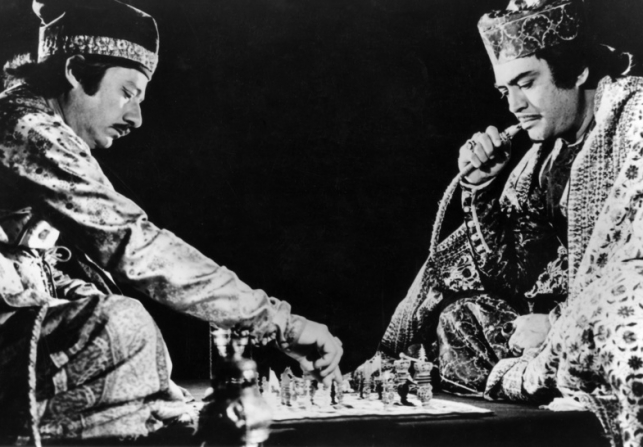Oh This Lucknowiyat!
What is Lucknowiyat if not awareness of being born and brought up in Lucknow.
The idea of Lucknowiyat first came to mind during time spent abroad. That time spent away from Lucknow made me most aware of how special Lucknowiyat was, when forced by circumstances I found myself in different parts of the world.
For a while I had made Vienna my home. Vienna, the former imperial capital of a once vast empire in central Europe, and birthplace of Dr. Sigmund Freud, father of psychoanalysis.
That city allowed me to sort out the relationship between my id, ego and super ego and gave me an opportunity to observe how I was dealing with life's challenges.
The adjustments and compromises I got myself to make in order to hold on to eros, that essential lust for life in a city with a climate, culture and courtesies so different to Lucknow, must be what Lucknowiyat is all about.
I imagine Lucknowiyat to be the art of receiving the other without prejudice. And an attempt to cultivate a genuine interest in other ways of life.
To understand Lucknowiyat better, I return to almost a millennium ago when the first Muslim must have struggled to make a home in South Asia.
What a formidable clash of cultural adjustments and compromise it must have been! To try and sow seeds of mutual tolerance and understanding. That exercise eventually blossomed into deep rooted courtesies seldom practiced by such a large, diverse group of people anywhere else in the world.
However, much before Islam came here, Arab and Indian traders cruising on the waters between the Indian sub continent and the Arabian peninsula had already befriended each other, from times much before Muhammad, the prophet of Islam.
Persians and Indians were already used to exchanging jokes, never ending stories, and currency, at different posts on the Great Silk Road that originated in China, several centuries before the birth of Christ, connecting Asia to Europe.
Later Islam was brought to South Asia by the same combination of merchants, missionaries and warmongers.
It was mostly Turkic warriors and Afghan soldiers who chose to make Delhi their home in the 12th century.
A handful of Sheikhs and Pathans from that same lot were perhaps the first Muslims to live in Lucknow surrounded by a majority population of people, so different in language, food habits and religion, to each them.
The minority population of Muslim warriors must have wondered how they could lord over a majority Hindu population without warring?
How the Muslims succeeded in both ruling and befriending local populations, is perhaps the start of the story of the Ganga-Jamuni tehzeeb.
This is a way of life that comes naturally to this day to all those who have tasted the waters, at the confluence of the mighty Ganga and Jamuna rivers, meeting and yet flowing their separate ways at Sangam in the neighbouring city of Allahabad.
Lucknow saw its first population settle besides the Gomti, a tributary of the Ganga, as an unwalled town famous over time as a gunj, or treasure house of agricultural wealth.
This was the venue of wholesale markets brimming over with eatables that were coveted by people living far and wide. Those who came here never wanted to leave simply because of the easy availability of an endless variety of food in this lush part of the Indo-Gangetic plains.
Once they had reached here from mostly different parts of the very mountainous areas of Central Asia. The Muslims too decided to stay on, like many migrants before them.
The strategy was to live and to let live, as there was plenty to eat for everyone. Then why spray the green green fields with more blood?
Apart from consolidating their power in the city, Muslim rulers must have engaged their energy also in planning a way to befriend people in such a way that they would revolt less and help more, in making profit for the kingdom.
This transformation of societies by rulers of a minority community, without causing much offense to the majority helped to foster friendly relations between most citizens and made the economy prosper.
Prosperity attracted more migrations to the city whose administration must have ensured that there was less clash, and more exchange of sweet speech between people following different cultures.
This must have given easy birth to multiple identities that were allowed to thrive in comparative peace and security, provided to them by rulers of a city that was now home to an endlessly diverse population.
By the 18th century Lucknow had expanded into a baroque capital under the rule of a dynasty of Persian origin.
They communicated not in Persian the original mother tongue but in Urdu, a local language born in the northern Indian military camps where Indian, Arabic, Turkic and Persian soldiers had tried to understand each other.
The common greeting in Lucknow between all citizens of the city became adaab, or respect, instead of the original but foreign Arabic greeting of as-salaam- ailekum, or peace be upon you.
The overall result of such practices was the birth, of a surprisingly lovely cultural city that continued to attract people from around the world, including the British.
When conditions at the court of Mughal Delhi deteriorated in the mid 19th century poets, artists and craftsmen found shelter in a more prosperous Lucknow.
By now the city had developed a distinctive inclusive culture that remains a fascinating fusion of local religions and Islam.
“More than the city's compellingly beautiful appearance it was a rich culture that made Lucknow distinctive and gave a special meaning to the adjective Lucknawi. Used in an unflattering way, this term suggests foppishness, fastidiousness, exaggerated mannerisms and behaviour, reflected in costume and over elaborate etiquette, the idle preoccupations of a powerless aristocracy with much time for enforced leisure,” wrote Munshi Premchand in his famous short story The Chess Players.
This, and what else is Lucknowiyat?
Your turn to tell me more!





